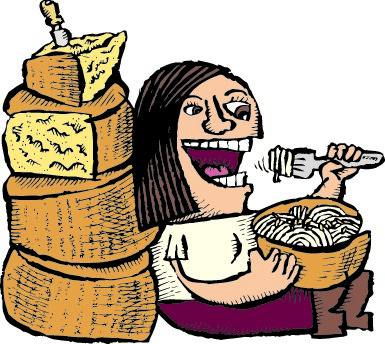
Is fresh pasta better than dried pasta?
Almost always folks assume fresh pasta is better.
They assume if you had the time you should use fresh pasta over dried 100% of the time. Maybe that’s because it’s more work to make (if you make the pasta at home). Maybe it’s because fresh pasta is more fragile, more perishable. Maybe it’s because dried seems more industrial, more like a commodity, and it can sell for so much less.
Fresh pasta is not better than dried. It’s just different.
There are many times when dried pasta is preferable. Probably the most concise way to think of the tradeoff is this: use dried pasta when you want to enjoy noodles with a lot of texture and flavor; use fresh when you want a softer, subtler dish.
Dried and fresh pasta are made very differently.
Hence the different results and different uses in the kitchen. Traditional dried pasta is made by extruding durum semolina dough through bronze dies. It’s dried at relatively low temperatures for a couple days. The bronze die extrusion leaves the pasta with a rough hewn texture. You can feel it in your mouth and the sauce really grips to it. The slow drying ferments the flour a bit. It transforms the dough from tasting like raw flour to something more like bread.
In contrast, fresh pasta is usually rolled and cut and there is no fermentation. The texture is much softer, smoother, and the flavor is much less intense, much more like flour.
Not all dried pasta is equal.
It’s important to note when I talk about dried pasta I’m not talking about any old dried pastas. Most dried pasta is industrially made with exasperating shortcuts that leave it tasting unexceptional. In particular, they employ hot, short drying times so there is no transformation of the dough’s flavor. It tastes like flour. Worse, it’s flour with a burnt edge to the flavor. The extra hot ovens singe the surface in a way the slow, low drying methods do not.
To see what I mean, taste a piece of uncooked commercially made DeCecco pasta (one of the better industrial companies, dried at 80° Celsius for 10 hours) and a piece of Rustichella pasta (one of our favorites, dried at 45° Celsius for about 40 hours) next to each other. The flavor is remarkably different.